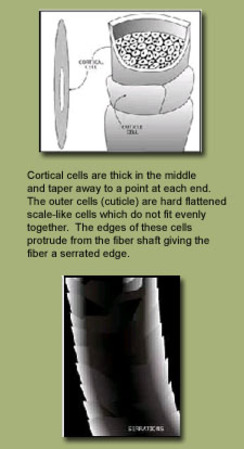|
December 12, 2011
Alpaca Fiber Structure
what makes it unique
By: Tim Sheets

Alpaca fiber is composed of three distinct elements; the cuticle or scale, the cortical cells and an intracellular binder to hold it all together. A complex protein called keratin forms the composition of the fiber. The fiber itself is a complex assembly made up of a vast number of cells. The inside of the fiber consists entirely of rounded elongated and spindle shaped cells called cortical cells. Cortical cells are thick in the middle and taper away to a point at each end. The outer cells (cuticle) are hard flattened scale-like cells which do not fit evenly together. The edges, of these cells protrude from the fiber shaft giving the fiber a serrated edge. Cortical cells are the load-bearing elements of the fiber, whereas the cuticle imparts the inherent aesthetic qualities of the fiber such as softness of handle and luster. Other functions of the cuticle include water repellence, felting during washing, and resistance to chemical and physical attack. The entire assembly of cells is held together by a type of 'cement' called the intracellular binder. Research has shown that the cuticle cells on sheep wool fiber protrude approximately 0.8 micron from the shaft whereas alpaca cuticle cells protrude approximately 0.4 micron. It would therefore be simple to conclude that the softness of alpaca over that of sheep wool of the same fiber diameter is due to the scale height (protrusion). If you like this article, please...  |